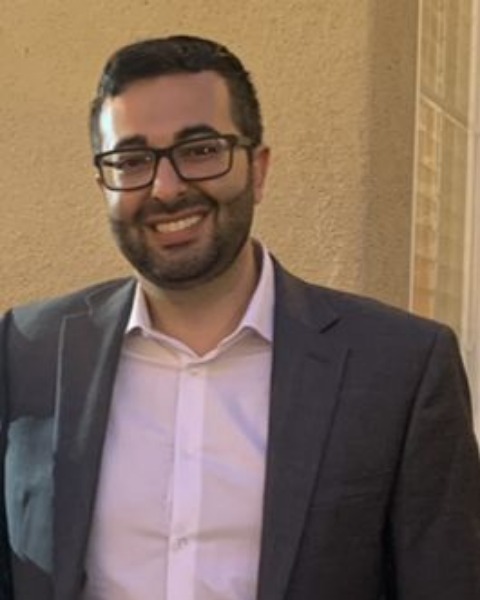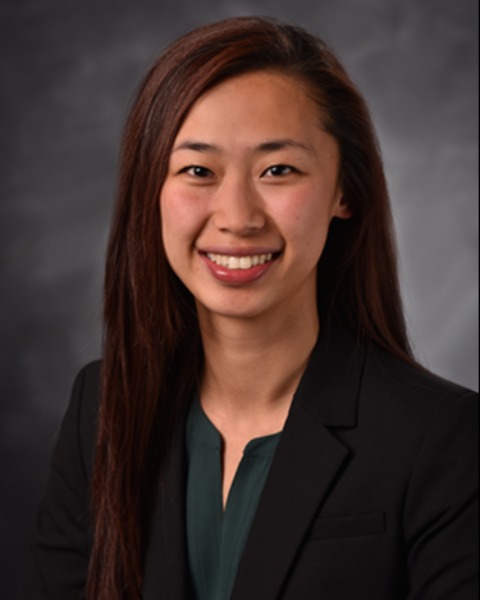PSM
non-CME
P49: Convolutional Neural Network to Predict Peritoneal Carcinomatosis Risk in Gastric Cancer

Arsha Ostowari, MD (he/him/his)
Resident Physician
University of California, Irvine, California, United StatesDisclosure information not submitted.

Arsha Ostowari, MD (he/him/his)
Resident Physician
University of California, Irvine, California, United StatesDisclosure information not submitted.

Jingjing Yu, MD
Resident
University of California, Irvine Medical Center
Anaheim, California, United StatesDisclosure information not submitted.
- AG
Amber Gonda, PhD
Project Scientist
University of California, Irvine, United StatesDisclosure information not submitted.
- CC
- BS
Brittany G. Sullivan, MD
Resident Physician
University of California, Irvine, United StatesDisclosure information not submitted.
- AK
Alexander Kreger, n/a
Medical Student
UCI Medical School, United StatesDisclosure information not submitted.
- YL
Yingjoy Li, n/a
Medical Student
UCI Medical School, United StatesDisclosure information not submitted.
.jpg)
Oliver S. Eng, MD (he/him/his)
Associate Professor of Surgery
University of California, Irvine, United StatesDisclosure(s): Tempus Labs, Inc.: Speaker (Ongoing)
- FD
Farshid Dayyani, MD, PHD
Professor
University of California, Irvine, United StatesDisclosure information not submitted.
- PC
Peter D. Chang, MD
Professor
University of California, Irvine, United StatesDisclosure information not submitted.

Maheswari Senthil, MD
Chief of Surgical Oncology
University of California, Irvine
Irvine, California, United StatesDisclosure(s): No financial relationships to disclose
Poster Presenter(s)
Author(s)
Peritoneal carcinomatosis (PC) is a common and deadly manifestation of gastric cancer with an incidence of 30-50%. The ability to predict the risk of PC may help customize management strategies. We have previously reported on a gastric cancer PC risk score based on specific patient (age and race/ethnicity) and tumor (grade, location, and histology) characteristics. Here, we apply convolutional neural networks (CNN) to directly learn CT imaging features predictive of PC risk in patients with gastric and gastroesophageal junction (GEJ) cancer.
Methods:
Patient with a diagnosis of gastric/GEJ cancer treated at our institution between 2015-2020 and had imaging available for analysis were included in the study. A randomly selected cohort of patients (n=44) were used for algorithm development. Demographic, tumor characteristics and preoperative CT imaging data were obtained for each patient. The PC status of each patient was confirmed by findings from surgical interventions or additional imaging (26 negative vs 18 positive). For each patient, segmentation masks corresponding to the primary tumor of interest (Figure 1A) were generated. A CNN model with 14 layers and 7,959 trainable parameters was developed for prediction of PC risk. Half the patients were used for algorithm training while the other half were used as a validation cohort. Experiments were repeated ten times for reproducibility. Model performance was assessed by area under the receiver operating characteristics (ROC) curve and binary classification statistics.
Results:
In our cohort of 44 patients, 38 (86.4%) had gastric cancer and 6 (13.6%) had GEJ cancer. The median age was 61.2 years, 54.5% were male and Hispanic and Asian were the most common race/ethnicity (n=17 each, 38.6% each). Among tumor characteristics, most tumors were poorly differentiated (n=36, 81.8%) and nearly half had signet ring component (n=21, 47.7%). The final trained model yielded validation set performance of 0.838 AUC with an accuracy of 0.76, sensitivity of 0.625, specificity of 0.824, PPV of 0.625 and NPV of 0.824 (Figure 1B). A larger validation set (N >100) is being incorporated to further test the model.
Conclusions:
A deep learning CNN model can predict the risk of PC in patients with gastric and GEJ cancer directly from routine CT imaging data. We are currently in the process of testing the model in a validation cohort with the ultimate goal of merging the clinical gastric cancer PC risk score with the deep learning CNN model to improve the assessment of PC risk. Increased specificity of gastric cancer PC risk score may aid in developing risk-adjusted treatment approaches.
Learning Objectives:
- Upon completion, participants will be able to understand the advantage of convolutional neural network model in assessing gastric cancer peritoneal carcinomatosis (PC) risk.
- Upon completion, participants will be able to understand the importance of PC risk nomogram in calculating the risk of PC in patients with gastric and GEJ cancer from CT imaging.
- Upon completion, participants will be able to understand the importance of improved PC risk assessment and the possibility of developing risk-adjusted treatment approaches.
